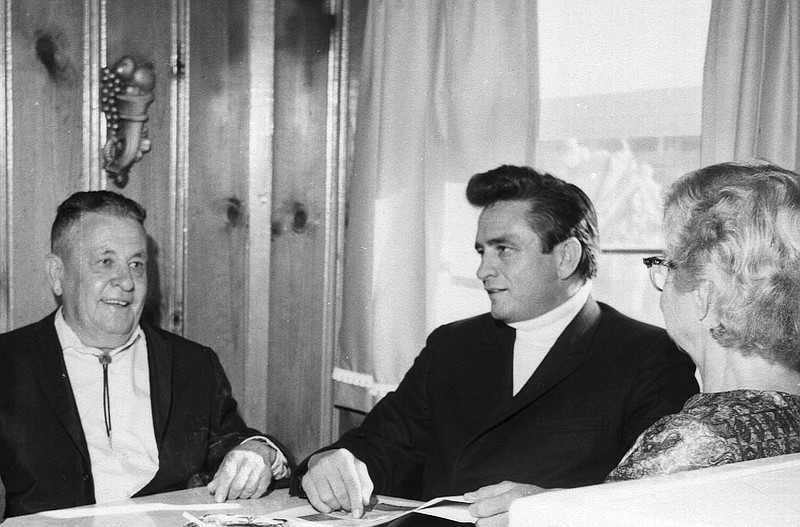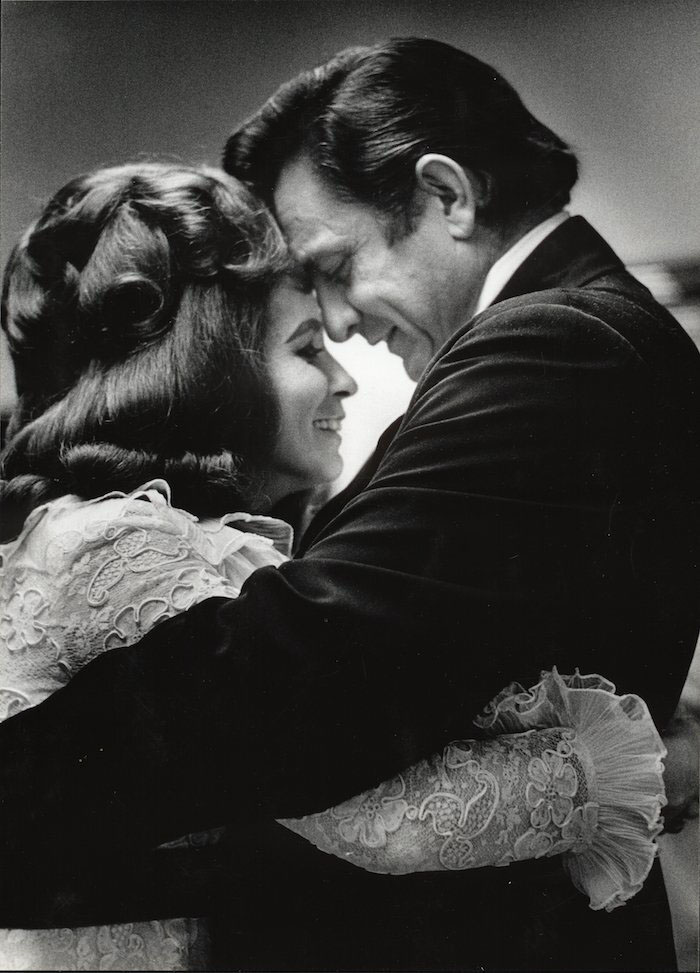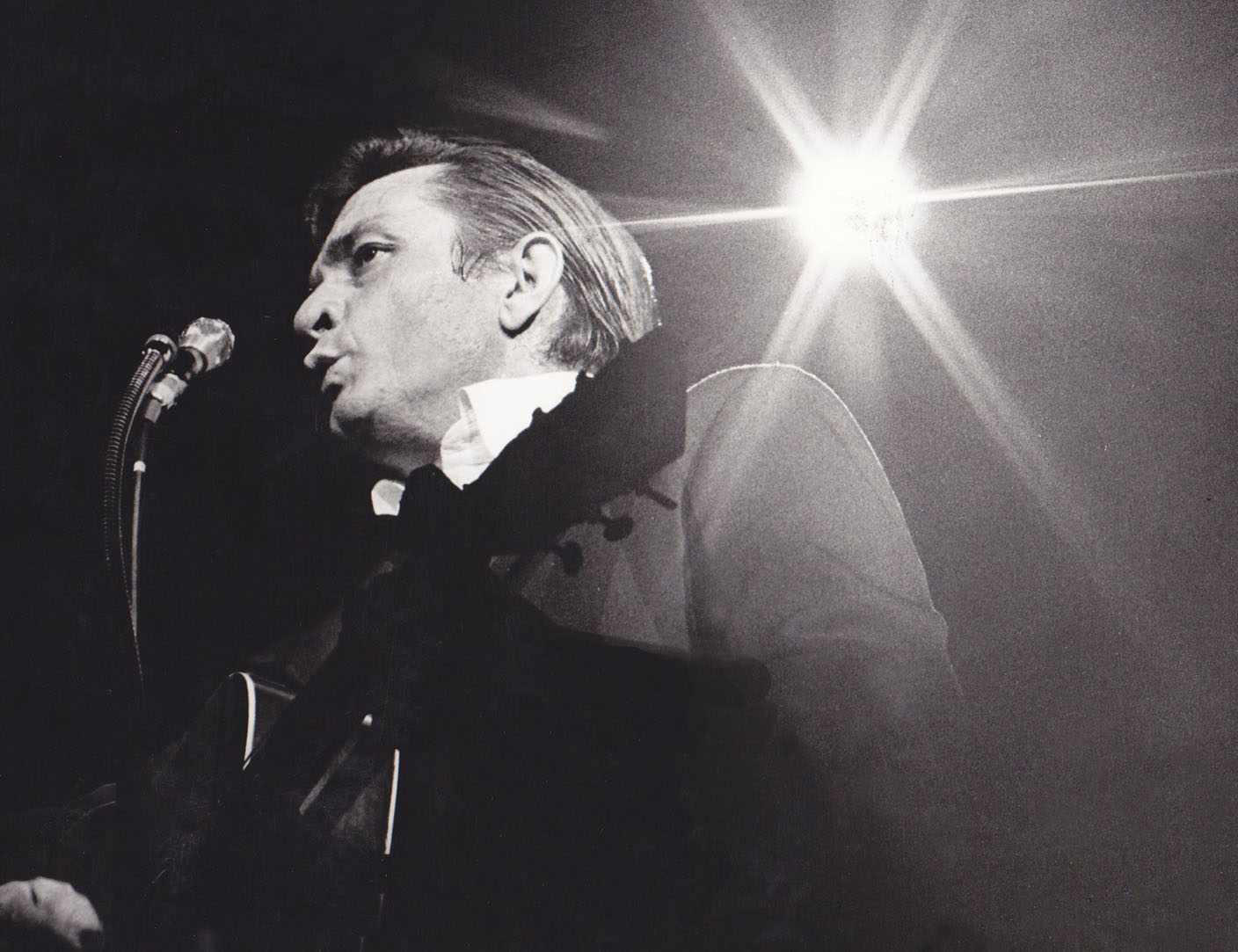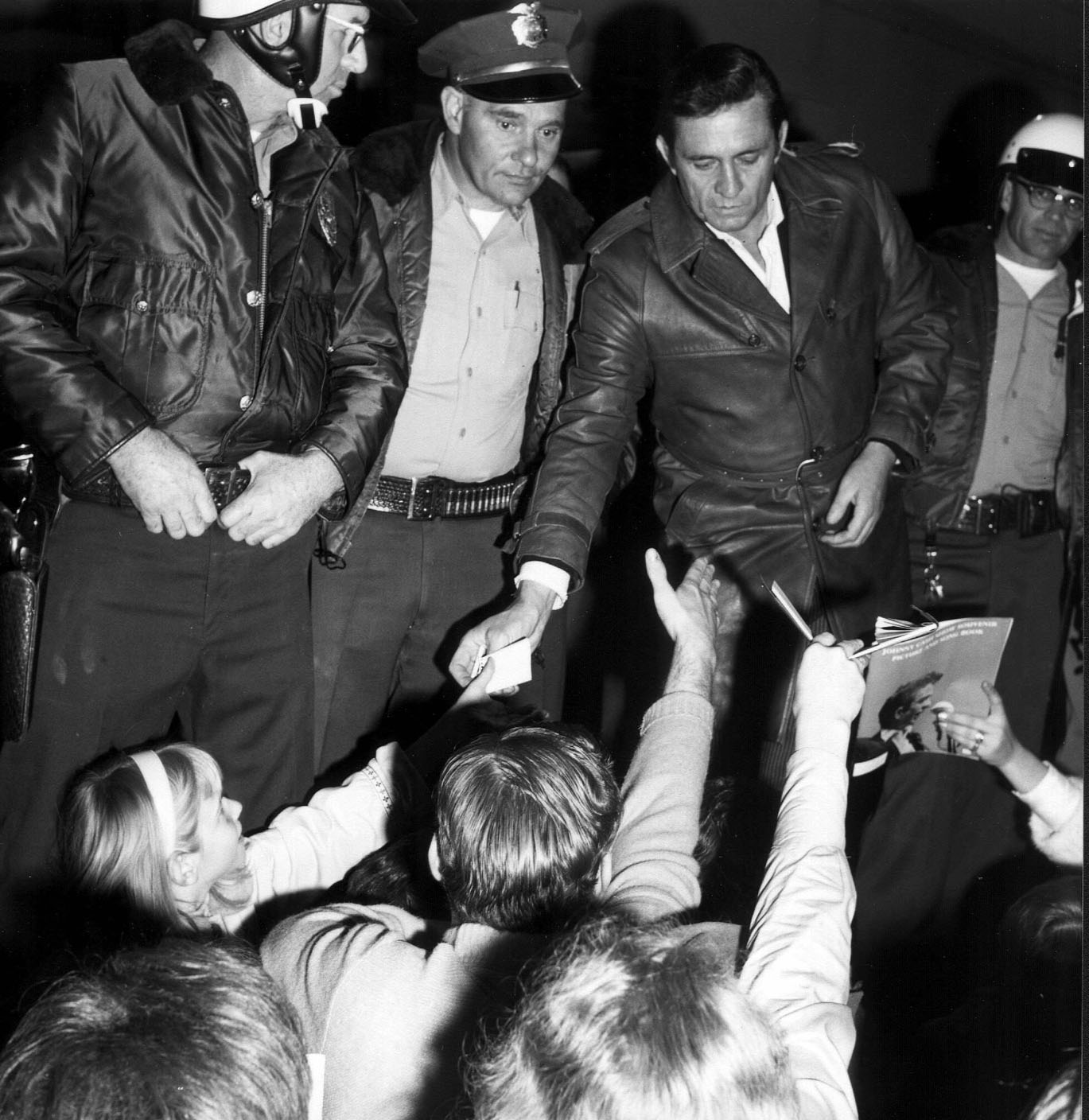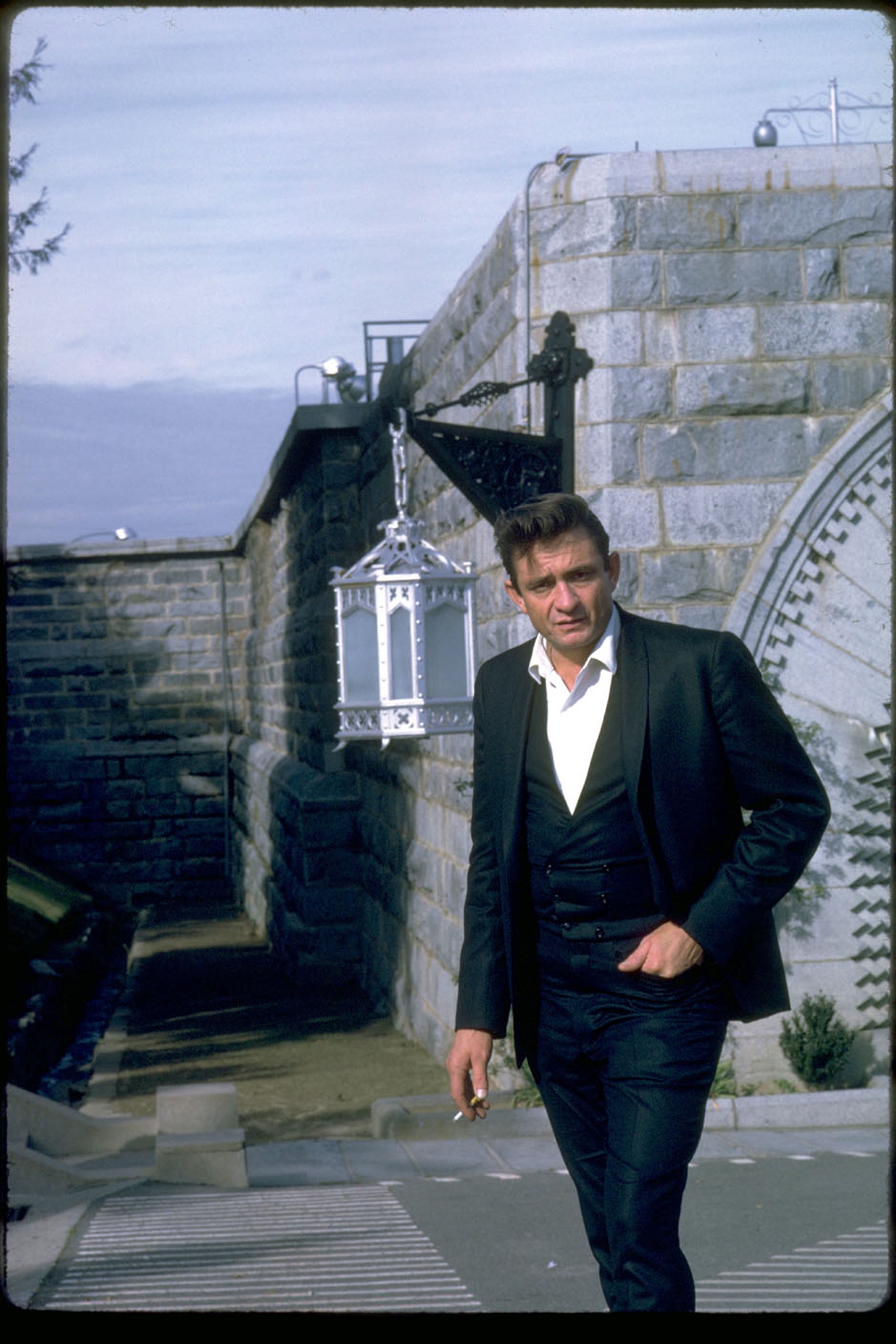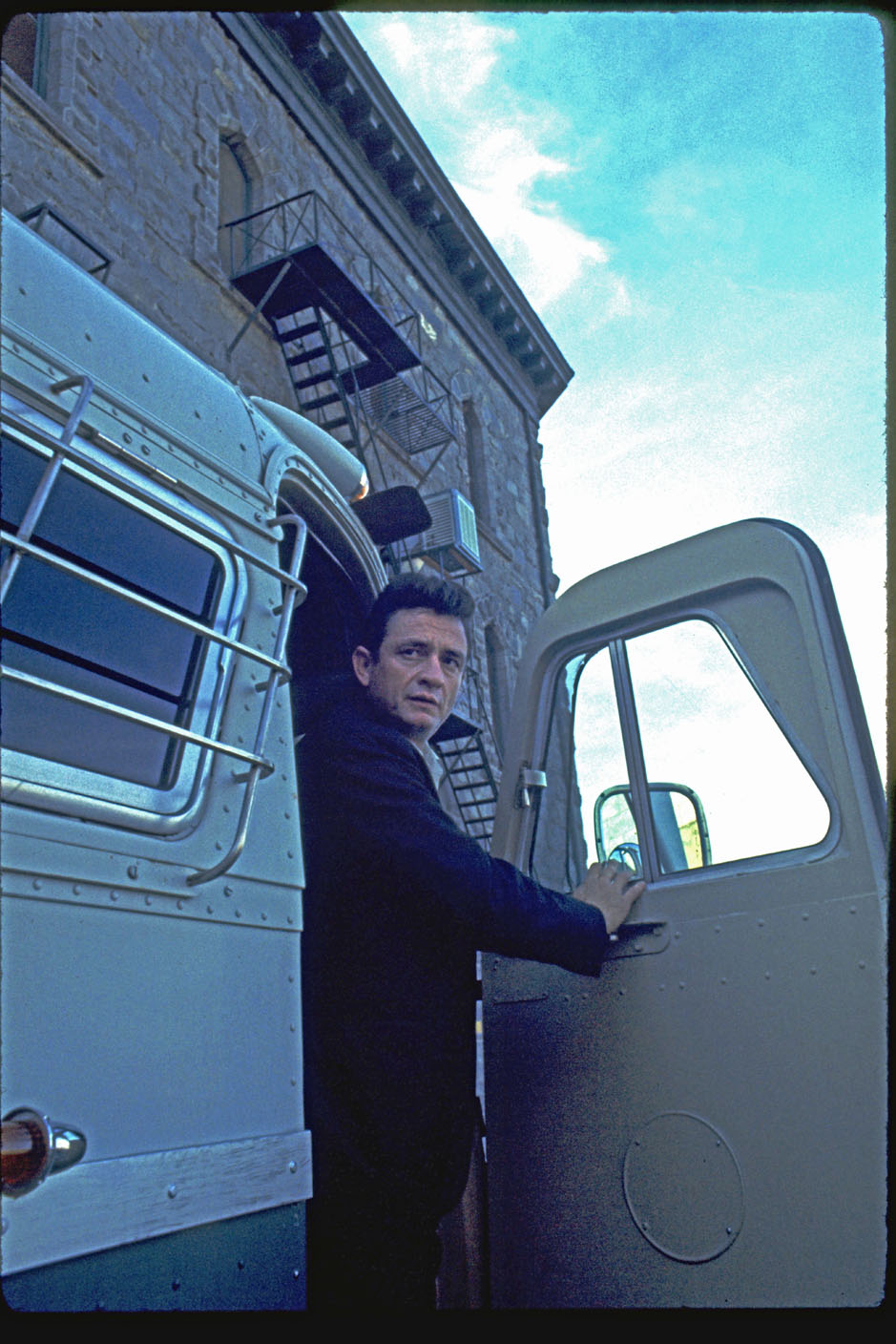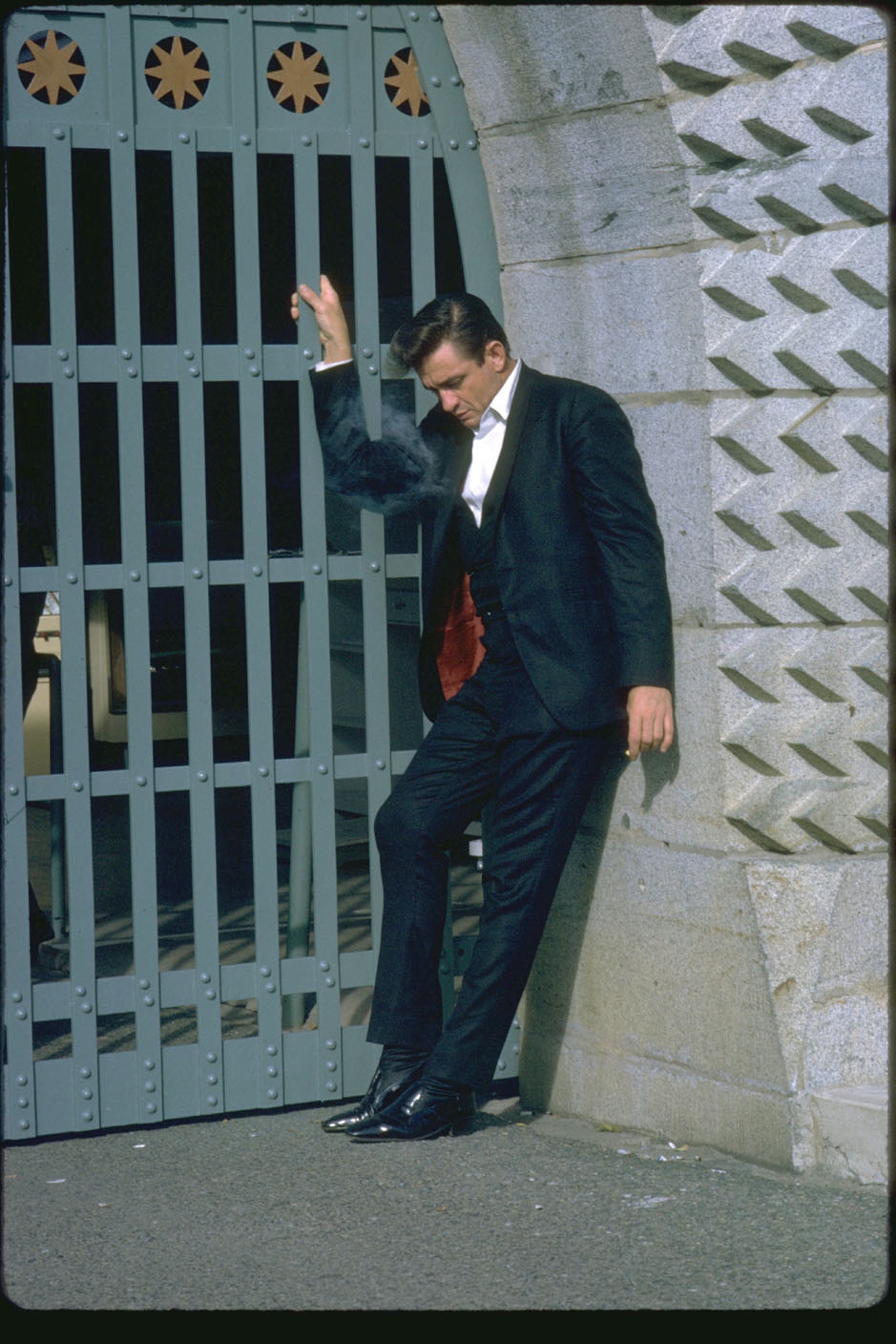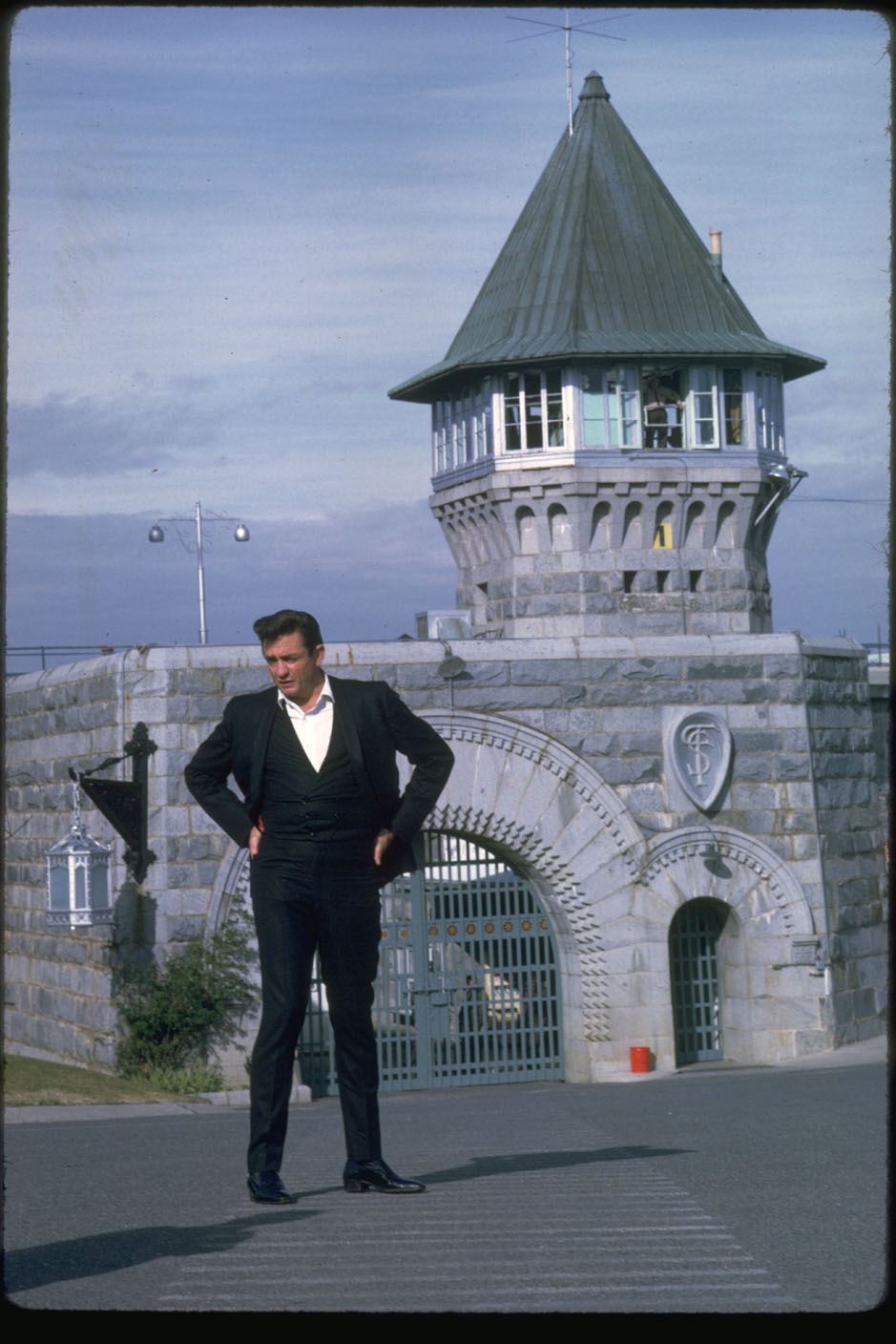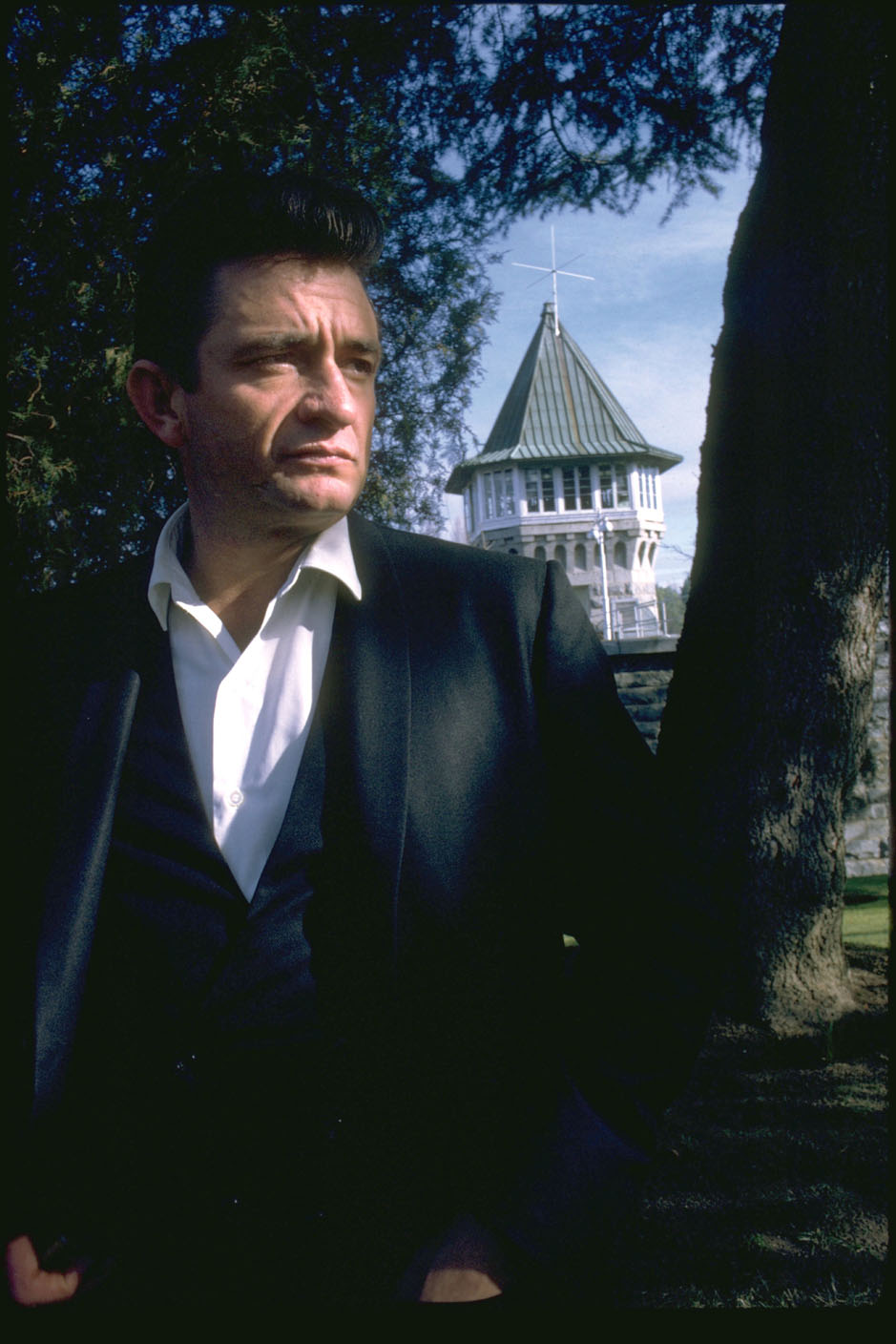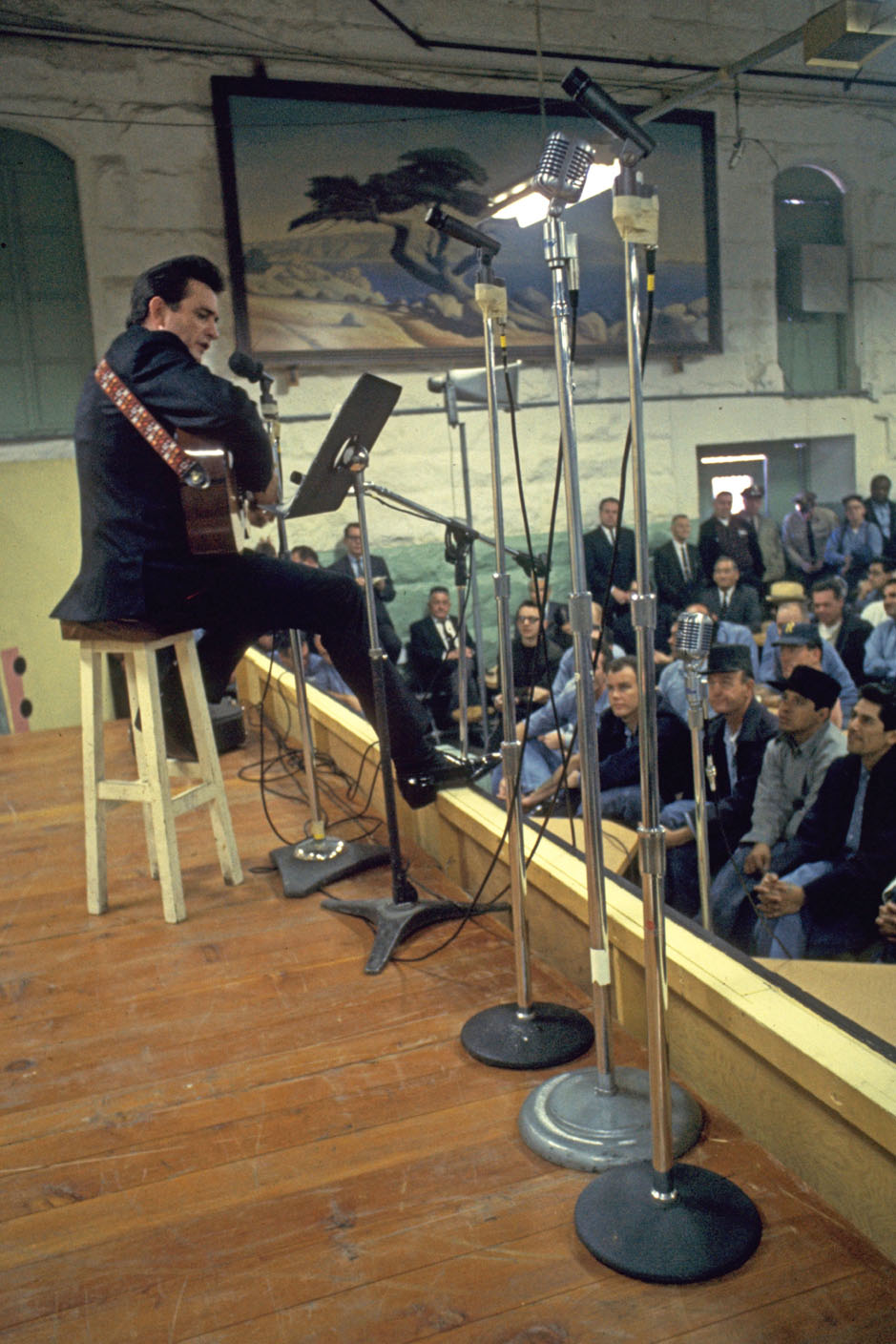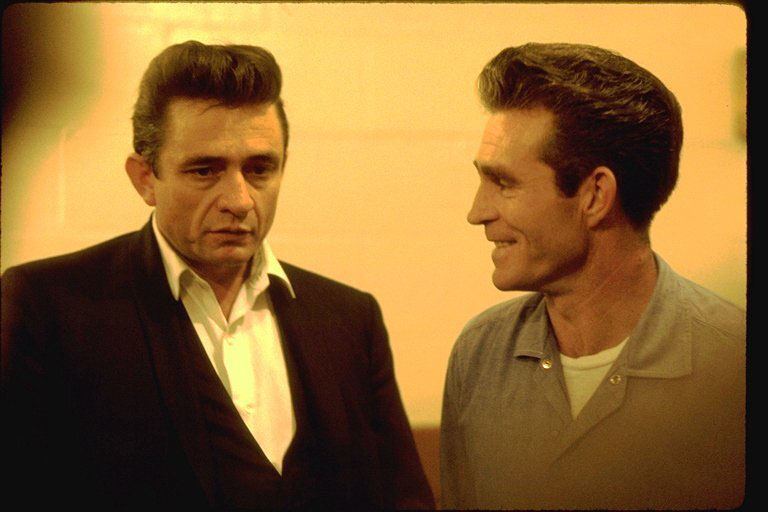The debate over the purpose -- and success -- of incarceration rages on today. But in at least one case -- that of J.R. "Johnny" Cash -- prison was a redemptive experience, even if it was just for two musical performances in January 1968. And now, thanks to a traveling photographic exhibit open through Aug. 11 at The Center for Humanities and Arts at University of Arkansas Pulaski Tech in North Little Rock, music fans can revisit the events that reshaped the Man in Black and rewrote music history.
"[The exhibit] is a glimpse at a landmark cultural moment of somebody who is an American original, who really made a step forward in his career and his ability to connect with people by playing this particular show," says Tim Jones, Pulaski Tech's director of public relations and marketing. "It's seldom that any artist is able to achieve that sort of thing in one fell swoop. [Folsom Prison] was a singular event in musical history and in Johnny Cash's life."
Officials have been awaiting the exhibit, titled "1968: A Folsom Redemption," for the better part of three years, according to Kurt Leftwich, director of CHARTS programming and events. He says the collection originally went on tour in 2018 to mark the 50th anniversary of Cash's Folsom Prison concerts and has been on the move ever since, even making a stop at the restored Johnny Cash Boyhood Home in Dyess Colony (Mississippi County).
Leftwich says the motivation for bringing the exhibit back to Arkansas was an obvious one.
"Johnny Cash is one of Arkansas' favorite sons, basically, and this brings back that history," he says. "... We'll have people who will probably come out and take a look at it to remind themselves of that history.
"But we also hope to introduce this bit of history to a bunch of new people who may not even know very much about it. Obviously, this is from a long time ago, decades before many people on campus were born. It's a good reminder for a lot of people and also an introductory thing for the next generation to let them know why this concert held in this prison was such a big deal."
Cash himself likely didn't know what the Folsom Prison concerts would mean at the time, even though they were recorded for "Johnny Cash Live at Folsom Prison," today considered one of the landmark American music albums. In 1968, it was simply an effort for a fallen star to correct the arc of his career, playing in front of the people he knew and understood best.
It had been a little more than a decade since Cash burst onto the musical landscape in 1955 with "Hey Porter" and "Cry! Cry! Cry!" and scoring his first No. 1 with "I Walk the Line" the following year. In between, he released "Folsom Prison Blues," a song inspired by a movie Cash saw while in the service, "Inside the Walls of Folsom Prison." The stripped-down tune ultimately charted in the top five in America, serving as a springboard for the hits that were just around the corner.
But by the mid-1960s, Cash's brand was fading fast, in large part due to events in his personal life. His first marriage was in ruins, hastened by his pursuit of June Carter. He was also drinking heavily and addicted to amphetamines and barbiturates, accoutrements de rigueur in the emerging "outlaw country" movement of which he was the primary poster child.
In fact, given a string of high-profile drug issues, most people assume Cash did hard time. He did not; although he did his share of sleeping off misdemeanors in local jails.
Nevertheless, public and press judgments were harsh, and despite the No. 1 single "Ring of Fire" in 1963, it didn't take long for many to turn their backs on Cash, especially after the socially conscious "Bitter Tears" (1964) and experimental double album, "Johnny Cash Sings the Ballads of the True West" (1965) held little of what traditionalist country fans were seeking.
All these things only tightened Cash's embrace with society's outcasts and underdogs and they with him. He'd done prison shows dating to the 1950s, including a nonrecorded concert at Folsom in 1966. That performance planted the seed for a live prison album, an idea Cash sold to his record company. A relationship with a California preacher who did a regular prison ministry pointed him toward Folsom and the fateful Jan. 13 date that included his backing band the Tennessee Three, the Statler Brothers, June Carter and Carl Perkins.
Also on hand for the landmark event, at the invitation of Cash's preacher pal, were journalist Gene Beley and photographer Dan Poush, two of only three press members on hand, who photographed the performer before, during and after the shows. The duo's collection of black-and-white and color photos are the definitive record of the event, about 30 images of which make up "1968: The Folsom Redemption."
Beley, then 28, would in later interviews tell of being awestruck by being in Cash's presence, something that he quickly got over thanks to the Arkie's common-man demeanor.
"He was just so down to earth and friendly," Beley told History.com in 2018. "Totally charming, a great smile. He looked like the guy next-door -- someone you'd want to hang out with."
"He was almost an 'aw shucks' type of guy. You couldn't ask for anyone more Arkansas, down-home, humble."
Cash would record another prison concert for the "At San Quentin" album the following year, but the comeback was already complete. On the strength of the Folsom record -- it would eventually sell more than 3 million copies -- Cash would be offered a TV show -- which ran on ABC from 1969-71 -- and quickly regain his lost luster with the public.
He'd continue to record -- some of it awe-inspiring, some of it awful -- the rest of his life. He'd be written off again in the 1980s, but Cash had one more comeback left in him, ending on a creative and critical high note with producer Rick Rubin on a string of six stunning albums collectively known as "The American Recordings," released between 1994 and 2010, seven years after Cash's death in 2003.
One wonders how many parallels Cash drew between those triumphant final records and the landmark concerts at Folsom, captured in their humble glory in the current exhibition. Leftwich says one standout feature of the exhibit is the easy authenticity of what's been captured on film -- Cash outside the prison gate smoking a cigarette, he and June walking across the Folsom yard, the sweat streaming down his haggard, drug-chewed cheek as he sings. If you didn't know better, you'd never guess you were looking at history in the making, to say nothing of the rebirth of one of the most important artists of the 20th century.
"The shots evoke more of a candid family album, almost," Leftwich says. "It was this historical event, but it just kind of looks like it's just Johnny Cash and his friends and family doing a bunch of candid pictures that could be at any event or any concert. There's a lot of great candid moments where you just kind of see Johnny Cash being a normal person. That's what struck me about this is this isn't choreographed or staged-looking photography. These just look like candid pictures."
